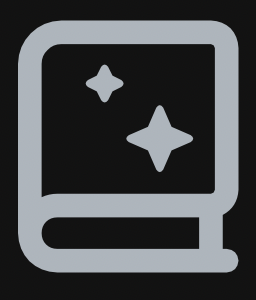I recently wanted to run tegaki, and my experience is pretty much summed up by the meme. I consider myself fairly tech-savvy, but I just couldn’t figure out how to compile it. So I just gave up, downloaded the .exe and put it into a fresh wine prefix. After installing CJK fonts, everything ran fine. Now I’m trying to get gpaint to work. My distro recently dropped support for [[[ EDIT: gtk2 is alive and well. I was just being and idiot and searching for gtk+2 (which I am fairly pissed about, since it’s the last good version of GTK+), so I have to set that up manually as well.gtk2, when the package is actually called gtk+2. ]]] I installed all of the dependencies that ./configure told me to, but I still kept getting obscure errors when running make.
So, here’s my question: what tools make the process of running abandonware easier? Docker containers? Also, what can I use to package abandonware in order to make it easy for other people to run? Flatpak? Appimages? Any advice is appreciated!
Also, inb4 “just find a modern alternative”. That would be a reasonable solution. I don’t want reasonable solutions!
Pull a docker image of an old distro into an apptainer sandbox, install what you need within, then make a
.sifimage, should work pretty much in perpetuity. You can also try to make an Appimage.That’s what DistroBox is for: https://github.com/89luca89/distrobox
I was coming here to post this.
TIL about sif. Thanks, will give it a try!
I am a beginner Linux user, if above scenario happens to me , I will not know what the hell you are talking about and just get windows, the linux community , here does not support the average user even in memes.
This was just an outline of what you could do in the scenario, not a full solution. Looking up the keywords, “Apptainer” (+sandbox), “.sif”, and “AppImage” should give you a starting point, and any specific questions can be answered separately. You are right that people could be jerks to beginners but this is rarely the intent. Not all discourse about Linux has to be at a beginner level, and packaging legacy software is not really a beginner topic.
I am using linux for 20+ years and don’t understand what they said. And I don’t even want to, I was using wine to run open source software before flatpak, when I need it once a year.
Running the Windows version in Wine probably would never have occurred to me.
Arch (i UsE aRcH bY tHe WaY)'s AUR has a package for it. I just installed gpaint on a Raspberry Pi 4 just to see if it worked. It worked perfectly. (Disclaimer: I did have to update the architecture in the PKGBUILD to allow armv7h, but on an x86_64 machine, that wouldn’t be an issue.)
You could probably run Arch in Docker and install the AUR package in the Docker container if you wanted to go that route.
Mi just love the AUR 👌🏻
I do this using an Arch distrobox on my openSUSE Kalpa machine whenever I need anything that isn’t flatpak’d or available through my tumbleweed distrobox.
AUR my beloved
AUR can’t save you from a library needing old versions of dynamically linked libraries
deleted by creator
I don’t know what was originally written here, but shouldn’t it now read “Could not find creator.so.5”?
find an even older, less mantained alternative.
Or you find an AUR someone built years ago
That’d be one of those many broken AUR packages that won’t compile.

What the hell is this
They cwyin
I read that as “they cygwin” and tbh it’s a pretty accurate depiction of doing anything with cygwin, in my experience at least
I got Mechwarrior 3 working with wine. That shit was fuckin impossible on modern windows.
A lot of DirectX titles from that time period won’t run. It’s the biggest reason Wine on Windows makes sense.
I like how you pointed out: backwards compatibility is a choice.
One day someone’s posts how all Linux programs run forever and Windows creates abandonware
Another day someone complains about the Linux version of his program not tuning anyone so he has to use the Windows version
I’m not sure what’s going on anymore
In the unix world, truly great programs tend to stay around for ever.
lesshas been around since 1983.grepwas there ten years earlier. Linux users lovevim. What does the “v” stand for, you ask? “Visual”, of course, because it was one of the first text editors to offer support for computer monitors. And before that, when we had teletypes, people useded, which still comes pre-installed with Ubuntu. Not to mention that the modern linux terminal is basically emulating (that’s why we called them terminal emulators) an electronic typewriter with some extra extensions for color and cursor support. They’re backwards compatible to this day. That’s why it says tty (teletype) when you pressctrl-alt-F2.The caveat is that these examples are all low-level programs that have few dependencies. And they are extremely useful, therefore well-maintained. When it comes to more complex programs with a lot of dependencies, unless there is someone to keep it updated with the latest versions of those dependencies, it will eventually get broken.
The reason this happens less often in W*ndows is because w*ndows historically hasn’t had a package manager, forcing devs to bundle all their dependencies into the executables. Another part of the reason is that m*cros*ft would lose a lot of business customers if they broke some obscure custom app with a new update, so they did their best to keep everything backwards compatible. Down to the point of forbidding you from creating a file named
AUXin order to keep support for programs written for qdos, an OS from before filesystems were invented.The reason this happens less often in Wndows is because wndows historically hasn’t had a package manager, forcing devs to bundle all their dependencies into the executables
Thanks that’s pretty informative
Why isn’t there a way for Linux users to automatically install every missing dependency for a program? Not sure if this will net me a ban here but the W*ndows way kind of looks superior here. Having old programs break with updates is a massive pain.
isn’t there a way for Linux users to automatically install every missing dependency for a program?
Great question! There is. What you’re describing is a package manager. Overall, they are a great idea. It means devs can create smaller “dynamically linked” executables that rely on libraries installed by the package manager. The w*ndows equivalent of this is using DLL’s. Another advantage is that urgent security updates can be propagated much faster, since you don’t have to wait for each app that uses a vulnerable library to update it on their own. Also, dynamically linked executables can help save on ram usage. With statically linked executables, everyone brings their own versions of some library, all off them off by a few minor revisions (which all have to be loaded into ram separately), whereas a bunch of dynamically linked executables can all pointed to the same version (only needs to be loaded once), which is what package maintainers often do. Finally, package managers eradicate the need for apps to include their own auto-updaters, which benefits both developers and users.
This model goes wrong when software depends on an outdated library. Even if the package maintainers still provide support for that outdated version, often it’s difficult to install two wildly different versions of a library at the same time. And apart from libraries, there are other things that a program can depend on, such as executables and daemons (aka background processes aka services), old versions of which are often even more difficult to get running along with their modern counterparts.
So when you say that the “W*ndows way kind of looks superior here”, you are right about the specific edge case of running legacy apps. It just happens that the Linux crowd has historically decided that the other benefits of package managers outweigh this disadvantage.
There are tools for developers to bundle dependencies. Statically linked binaries, “portable” apps, AppImage, and so on… It’s just that package managers are so widespread (because of the aforementioned benefits), few developers bother with these. The general attitude is “if you want a statically linked executable, go compile it yourself”. And by the time it’s time to make an “archiveable” version of an app because it’s abandoned… nobody bothers, because it’s, well, abandoned.
However, as disk capacity and ram size steadily increase, people are starting to question whether the benefits of traditional package managers really outweigh the added maintenance cost. This, combined with the recent development of a linux kernel feature called “namespaces”, has spawned various new containerization tools. The ones I am familiar with are Docker (more suited for developer tools and web services), and Flatpak (more suitable for end-user desktop apps). I personally use both (flatpak as a user, and docker as both a user and a developer), and it makes my life a whole lot easier.
As for what makes it easier for users to get old apps working (which is what you’re asking), well… that’s sort of what we are discussing in this thread. Again, these tools aren’t very widespread, because there is rarely a practical reason for running legacy programs, other than archivism or nostalgia. More often than not, modern and maintained alternatives are available. And when their is a practical reason, it is often in the context of development tools, where the user is probably skilled enough to just Dockerize the legacy program themselves (I did this a couple times at a job I used to have).
Why isn’t there a way for Linux users to automatically install every missing dependency for a program?
There is; actually there are several. Every^* distribution has a package manager, that’s what it does. But you have to make a package for the program, similar to what the tegaki folks have done for Mac and Windows.
Another option is to statically link everything.
One issue is the fragmentation; because there are so many Linux distributions, it’s hard to support packages for all of them. This is one thing that flatpack aims to solve.
I would expect this to be an issue for old closed-source software, but not for old free software. Usually there’s someone to maintain packages for it.
Some cursory searching shows no tegaki package on flathub or in nix (either of these can be used on any distro; the nix one is surprising to me; it hosts soooo many packages).
But I do see it in Debian: https://packages.debian.org/search?suite=default§ion=all&arch=any&searchon=names&keywords=tegaki
There’s pros and cons. On one hand, packing your dependencies into your executable leads to never having to worry about broken dependencies, but also leads you into other problems. What happens when a dependency has a security update? Now you need an updated executable for every executable that has that bundled dependency. What if the developer has stopped maintaining it and the code is closed source? Well, you are out of luck. You either have the vulnerability or you stop using the program. Additionally bundling dependencies can drastically increase executable size. This is partially why C programs are so small, because they can rely on glibc when not all languages have such a core ubiquitous library.
As an aside, if you do prefer the bundled dependency approach, it is actually available on Linux. For example, you can use appimages, which are very similar to a portable exe file on windows. Of course, you may run afoul of the previously mentioned issues, but it may be an option depending on what was released.
Do you happen to know what (if any?) technical advantages appimage has over “portable” applications (i.e. when the app is distributed as a zipped directory containing the executable, libraries, and all other resources)"? As far as I understand, appimage creates an overlay filesystem that replaces/adds your system libraries with the libraries that the packaged app needs? But why would that be necessary if you can just put them in a folder along with the executable and override
LD_LIBRARY_PATH?Thanks
I’m just getting started with nix, if I’m understanding it correctly I think that is kind of what nix package manager does? It keeps packages and their versions separate and doesn’t delete them, so that you can update some programs and their dependencies without breaking other programs that depend on other versions of those same dependencies. https://www.linux.com/news/nix-fixes-dependency-hell-all-linux-distributions/
Yep, that’s the gist. Nix build is reasonably good at spitting out what’s missing ( if your packaging a random git ) and nix-init gives you a great starting point, but generally will need some tweaking to get the package running / installing.
deleted by creator
Maybe I’m missing something or don’t know how to use wine, but more than 50% of the time if I try to run an old windows program it doesn’t work.
Wine tends to work better for W*ndows programs that already have a Linux port, because they depend on fewer m*crosoft-specific libraries… which is not very helpful most of the time, but it is the subject matter of the meme.
Also guess I should say my solution is to run a virtual Windows machine on my Ubuntu laptop
I’ been wasting way to much time getting an oldish german game to run. This piece of junk won’t even run on windows, not bare metal, not in an XP virtual machine. I guess I’ll just try this every year from now it, to see if it runs with wine now.
Out of interest, which one is it?
A method I have not seen mentioned yet (for when you have an old precompiled version of an app):
- Identify the missing libs. You can run the program, but sometimes it’s easier to use ldd
- Use your web browser to download the missing libs from Debian’s repos (stable or older if need be). Unfortunately you often also have to grab their deps too.
- Extract the .debs
- Move all of the .so files into the same folder as the old program you are trying to run
- export LD_LIBRARY_PATH=“$(pwd)”
- Now try running the app
It often takes a bit of fiddling, but it’s worked for me a few times and you only need to fetch the few libraries you are missing. For bigger things however it can be a dependency hell, you might as well use the distro’s actual package manager inside a chroot.
Note: You don’t need to be using Debian as your host distro, I don’t. As long as it’s a glibc based distro you should be mostly fine (glibc is mostly backwards compatible)
Sometimes you can have a similar experience trying to get abandoned Windows software to work too. Found myself in DLL/OCX hell trying to get an obscure old Windows game to work in Bottles.
And if that wasn’t bad enough, after installing Bottles’ Flatpak (the first and only Flatpak I’ve ever used), the system decided to activate hourly Timeshift backups despite that being disabled in Timeshift’s config. I invoked the power of irony and told Timeshift to take the system back to a pre-Bottles state, and lo, everything behaved again.
I love bottles. Especially the flatpak version, since I don’t have to worry about w*ndows programs shitting up my filesystem. And the recent per-bottle sandbox feature is also great for running semi-untrusted applications without needing to toggle things in Flatseal every time. I do wish Bottles kept support for winetricks tho. Recently wanted to run M$ Paint (the XP version), and it just wouldn’t work with Bottles. Ended up installing the official Wine flatpak and using winetricks from there (it comes pre-installed).
Nix or guix are the proper solution.
Yep, if you manage to make it run on them, you are set forever.
First thing I’d try is to use a “period-correct” nixpkgs commit for the libraries. It might even have the package already.
Hmmm I’m a bit hesitant about nixpkgs, since when I last tried using it (outside of nixos), many (modern) GUI apps were broken, at least on my distro, But I’ll give this a try if u/observanTrapezium’s suggestion doesn’t work. Thanks!
If the app uses OpenGL in any way, you need to use nixGL: https://github.com/nix-community/nixGL
I want to search about it, but searching that didn’t help.
Yeah I just checked, seems like neither of the packages the OP talks about were ever packaged in nixpkgs.
Well to clarify the two big differences here are that the exe is pre compiled and maybe dynamic libraries.
Heavy tech stacks do suck though
Or just download an older live CD that is compatible, and use it in a VM.













